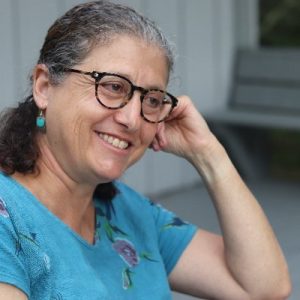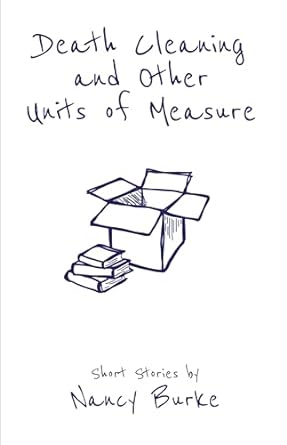Jettisoning History in a Historical Novel By Martha Anne Toll
Jettisoning History in a Historical Novel
 My debut novel, Three Muses, came out in September as a “historical novel.” The publisher describes it as follows:
My debut novel, Three Muses, came out in September as a “historical novel.” The publisher describes it as follows:
In post-WWII New York, John Curtin suffers lasting damage from having been forced to sing for the concentration camp kommandant who murdered his family. John trains to be a psychiatrist, struggling to wrest his life from his terror of music and his past.
Katya Symanova climbs the arduous path to Prima Ballerina of the New York State Ballet, becoming enmeshed in an abusive relationship with her choreographer, who makes Katya a star but controls her life. When John receives a ticket to attend a ballet featuring Katya Symanova, a spell is cast. As John and Katya follow circuitous paths to one another, fear and promise rise in equal measure. Three muses—Song, Discipline, and Memory—weave their way through love and loss, heartbreak and triumph.
I didn’t know I had written a historical novel until I got published. During the ten years I worked on Three Muses, I didn’t consider what genre I was writing. I suspect this is true for writers and readers; a single book can cross many genres. It’s about the reader’s pleasure in a book, not the genre label.
But I understand why Three Muses is a historical novel. The story takes place at a definite time in history (mostly in 1963, with backstory from 1944 foward). It deals with historical events: the Holocaust, America before and after the assassination of President Kennedy, an American ballerina whose ascendancy is particularly mid-twentieth century enmeshed with a choreographer whose behavior is also particularly mid-twentieth century. These last two are in a relationship that screams #MeToo, but they experience it 1950s style, not twenty-first century style.
I conducted extensive research to write Three Muses. Some of it I had been doing all my life. By the time I was a teen, I felt the need to educate myself about the Holocaust. I have been doggedly reading ever since. Memoirs can be particularly powerful (Viktor Frankl’s is iconic), but for me, the most lasting reads have been the fictionalized accounts of André Schwarz-Bart, Primo Levi, Arnošt Lustig, Lucia d’Eramo, and others.
In Three Muses, readers spend time with my protagonist, Janko Stein, as a young boy, before he becomes John Curtin in America. I had the benefit of an older cousin’s unpublished account of her childhood years in Mainz, Germany, before Hitler ascended to power. Most notable was my cousin’s description of normalcy. Like most Jewish families in Germany, hers consisted of patriotic German citizens before all else. My cousin’s personal history and the photographs she included brought this period to life. I relied on her descriptions for Janko’s early years.
And yet. I had to check details. Could Janko’s family have owned a horsehair sofa? Could his mother have used a walnut sewing box? For whatever complaints we may have about our too-wired lives, I loved that the internet provides an instant treasure trove of detailed, historical information.
I chose not to name the concentration camp where Janko is trapped so that I could give a more impressionistic account from a child’s point of view. I wanted to plumb the emotions of a child abandoned by death. I was concerned that to name the camp would be a distraction. On the other hand, I spent time on the website of the United States Holocaust Museum to clinch details.
I ran into multiple historical questions writing about John Curtin and Katya Symanova’s life in New York, where most of the novel takes place. Some of these questions became too vexing to solve. For example, John does his psychiatry residency in a hospital like Bellevue Hospital in New York. I tried to find what the interior décor would have looked like during the 1950s, to no avail. Eventually, I jettisoned Bellevue in favor of a fictional hospital that I called Beaumont, which I could situate on the east side of New York, and describe with more freedom. I was relieved that I was not misstating aspects of a real hospital that might take readers out of the story.
So too with ballet. Early on, I centered the celebrated ballet Swan Lake in Three Muses. I spent hours watching videos and reading accounts. Finally, I realized I was becoming paralyzed. I didn’t think I could ever learn enough about Swan Lake to write about it as I wanted. In addition, the plot of Swan Lake did not mesh with my plot. And so, I jettisoned Swan Lake in favor of creating my own ballets.
This task came with much more artistic freedom, and obvious challenges. To choreograph my own ballets, I had to choose the music and the costumes and the sense of the ballet and above all, the titles. I found the titles were an aid in advancing the plot and signaling to the reader where they were in the story. I could tie the ballets to the emotions of Katya dancing them, and of John watching them, without getting hung up on historical exactness.
Katya dances in a fictional ballet troupe, and her ballets are performed in the fictional Peter Stuyvesant Theater instead of a real New York dance venue. These departures from real places and real ballet histories freed me as a writer.
It is this hybrid novel that went to print—all fiction, with every effort at historical accuracy, unbound by jettisoning some hard facts. I hope that Three Muses benefits from its flights into fancy.
—
THREE MUSES
 …Three Muses captivates the reader from the first page to the last.” —Paul Harding, Pulitzer Prize winning author of Tinkers and Enon
…Three Muses captivates the reader from the first page to the last.” —Paul Harding, Pulitzer Prize winning author of Tinkers and Enon
Three Muses is a love story that enthralls: a tale of Holocaust survival venturing through memory, trauma, and identity, while raising the curtain on the unforgiving discipline of ballet. In post-WWII New York, John Curtin suffers lasting damage from having been forced to sing for the concentration camp kommandant who murdered his family.
John trains to be a psychiatrist, struggling to wrest his life from his terror of music and his past. Katya Symanova climbs the arduous path to Prima Ballerina of the New York State Ballet, becoming enmeshed in an abusive relationship with her choreographer, who makes Katya a star but controls her life. When John receives a ticket to attend a ballet featuring Katya Symanova, a spell is cast. As John and Katya follow circuitous paths to one another, fear and promise rise in equal measure. Song, Discipline, and Memory weave their way through love and loss, heartbreak and triumph.
BUY HERE
Martha Anne Toll writes fiction, essays, and book reviews, and reads anything that’s not nailed down. Her debut novel, Three Muses, won the Petrichor Prize for Finely Crafted Fiction. Toll brings a long career in social justice to her work covering writers of color and women writers. She is a book reviewer and author interviewer at NPR Books, the Washington Post, Pointe Magazine, The Millions, and elsewhere. She also publishes short fiction and essays in a wide variety of outlets. Toll has recently joined the Board of Directors of the PEN/Faulkner Foundation.
Category: How To and Tips
























